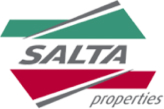At Archaeological Excavations our team of experts provide advice to ensure that the consultation process and heritage preservation. We offer experience and transparency in the facilitation of archaeological and anthropological surveys.
What is an Aboriginal Heritage Survey?
Heritage surveys are the relevant assessment for Aboriginal cultural heritage in Western Australia. At Archaeological Excavations, we help our clients to meet the requirements of the Aboriginal Heritage Act 1972 (WA). The surveys aim to avoid, minimise, and reduce our negative impacts on Aboriginal heritage sites wherever practicable. In order to do that, proposed activities are screened for potential impacts in compliance and where there is a potential risk of impact to an Aboriginal heritage site, further investigations are undertaken.
Heritage surveys identify and record both tangible and intangible Aboriginal heritage places. The types of assessment vary according to the stage of the project, and to the extent of the impacts on the heritage. The assessment can be ethnographic, archaeological or both, and the consultation with Traditional Owners is a crucial step of the assessment.
The consultation process with Traditional Owners includes stakeholder groups such as Prescribed Body Corporates, Registered Native Title Determination Applications and Native Title Representative Bodies and Aboriginal Corporations.
What Methodology is used in Aboriginal Heritage Assessments?
The heritage assessment methodology will vary according to its purpose:
Work Program Clearance: The methodology aims to ensure proponents that the area to be impacted by a certain activity is cleared of any Aboriginal heritage values. From the results of the assessment, proponents can move the proposed activity somewhere else, and avoid harm to Aboriginal cultural heritage. When this methodology is used, Aboriginal cultural heritage is not recorded by our team of heritage experts.
Work Area Clearance: Such surveys are designed to provide proponents with statements regarding the acceptability (in terms of impact on Aboriginal sites) of particular work areas or programs. To ensure the success of this survey methodology, proponents must provide a precise description of their proposal, together with high-quality maps, to the relevant Aboriginal groups (Guidelines for Aboriginal Consultation WA, 2004).
Site Avoidance Survey: A site avoidance survey provides the proponent with information that will enable them to avoid impacting upon Aboriginal sites. Consequently, whilst broad location information (i.e. the boundaries of areas that contain sites) and the general nature of sites will be divulged, precise locations (i.e. the boundaries of the sites themselves) and detailed cultural information is not disclosed (Guidelines for Aboriginal Consultation WA, 2004).
Site identification: By adopting this methodology, a survey of the entire proposed works area is usually conducted to physically locate and document Aboriginal sites of significance. A heritage consultant who works with Aboriginal groups that have a knowledge of and connection with the survey area, carries out the site identification survey. Upon completion of the fieldwork component of the survey, a detailed report is produced, which presents the results of the survey and contains detailed maps of any Aboriginal place or area of sensitivity documented during the survey (Guidelines for Aboriginal Consultation WA, 2004).
What if there are impacts on the Aboriginal Cultural Heritage site?
The Aboriginal Heritage Act (1972) protects all Aboriginal sites in Western Australia, regardless of whether they are registered or not with the Department of Planning, Lands and Heritage (DPLH).
Section 17 of the Aboriginal Heritage Act (1972) prohibits any damage or alteration to Aboriginal sites, including excavation, alteration, concealment, or destruction. It also prohibits any unauthorised alteration, damage, removal, concealment, or possession of any object on or under an Aboriginal site.
When potential impacts to heritage sites are unavoidable, a consultation process is initiated to seek consent for the harm. Approval from either the Registrar of Aboriginal Sites or the Minister for Aboriginal Affairs is required before any impacts can proceed.
Under Section 18 of the Aboriginal Heritage Act (1972), consent to harm an Aboriginal site can be applied for and granted by the Minister for Aboriginal Affairs. Consultation with the relevant Traditional Owners and Knowledge holders is required prior to lodging an application under Section 18.
Archaeological Excavations Pty Ltd can assist in this consultation process and with all relevant paperwork
Projects
Below is some information on projects Archaeological Excavations has worked on
Lyndhurst
The project involved an inland port at Lyndhurst as proposed by Salta Properties. The development would bring freight from Melbourne Harbour by rail to Lyndhurst where it would then be dispatched to trucks. The project aims to solve the issue of inner-city traffic congestion and provide greater opportunities for imports and exports in the southeast of Melbourne as it provides an alternative to road-based container transfer.
Drysdale Bypass
Drysdale Bypass is Bellarine Peninsula’s biggest road infrastructure project. Running 6 km from Jetty Road to the north of Whitcombes Road, the project involved the construction of four new traffic lanes separated by a central median, along with the construction of intersections, roundabouts and traffic lights.










